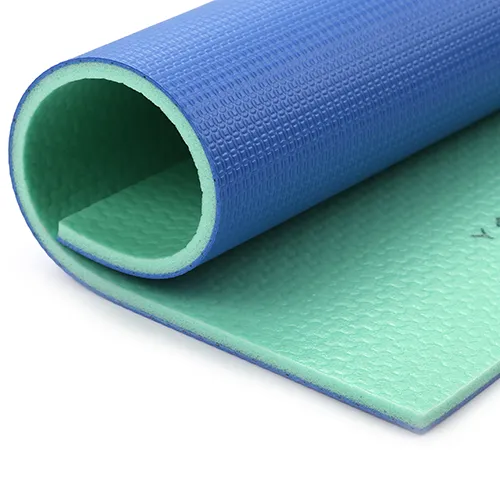Aug . 01, 2025 12:00 Ku laabo liiska
Best Table Tennis Flooring: Ultimate Guide for Gyms & Players
Doorashada saxda ah table tennis flooring is crucial for performance and safety in any gym, sports club, or competitive venue. A high-quality surface enhances player movement, shock absorption, and ball bounce consistency. Specialized sports vinyl flooring (PVC) is designed to provide excellent traction and durability, ensuring athletes can play safely and effectively.
This guide will cover the benefits of professional flooring, ah main material types, a comparison table, maintenance tips, and a buying guide to help gym owners, facility managers, and serious players make informed decisions.
Benefits of Quality Table Tennis Flooring
-
Injury Prevention & Comfort
Sports-grade flooring absorbs impact and reduces fatigue. Good cushioning protects knees and ankles during quick footwork and long training sessions. -
Waxqabadka Joogtada ah
High-quality floors provide a flat, uniform surface, ensuring consistent ball bounce across the court—critical for both practice and competition. -
Traction and Grip
Textured, non-slip finishes enhance player stability and prevent slipping, allowing athletes to move quickly and safely. -
Durability and Maintenance
Premium flooring options, especially vinyl, are water-resistant, wear-resistant, and easy to maintain, requiring only basic cleaning to stay in top condition.
Main Material Types
1. PVC Sports Vinyl Flooring
PVC Sports Vinyl Flooring is the most popular choice for professional table tennis court surfaces. It offers durability, shock absorption, and excellent traction.
Pros: Waterproof, non-slip, ITTF-compliant, long-lasting.
Cons: Higher upfront cost, requires a smooth subfloor and proper installation.
2. Rubber Flooring (Rolls or Tiles)
Provides superior shock absorption and comfort underfoot, ideal for multi-use gym environments.
Pros: Cushioned, durable, and minimizes joint strain.
Cons: Heavy to install, limited color options, higher material cost.
3. Carpet Tiles
An economical choice for recreational or home settings. They are soft, comfortable, and easy to install.
Pros: Affordable, DIY-friendly, reduces foot fatigue.
Cons: Not ITTF-approved, traps dust, requires regular vacuuming.
4. Hardwood Flooring
Traditional gym flooring offers a classic look and very consistent bounce, but minimal cushioning.
Pros: Professional appearance and predictable ball response.
Cons: Hard on joints, slippery if polished, high maintenance.
5. Polypropylene (PP) Interlocking Tiles
Ideal for outdoor table tennis courts. They are UV-resistant, weatherproof, and allow water drainage.
Pros: Durable outdoors, easy DIY installation.
Cons: Limited cushioning and not suitable for indoor competitions.
Comparison Table
| Material | Faa'iidooyinka | Qasaarooyinka | Ideal Use |
|---|---|---|---|
| PVC Sports Vinyl | Durable, cushioned, non-slip, waterproof | Higher cost; needs smooth subfloor | Clubs, professional tournaments |
| Rubber Flooring | Excellent shock absorption, very durable | Heavy and higher material cost | Training centers, multi-use gyms |
| Carpet Tiles | Soft, affordable, easy to install | Traps dust, not competition standard | Recreational or home use |
| Hardwood | Classic look, uniform ball bounce | Hard on joints, high maintenance | Traditional indoor courts |
| PP Interlocking Tiles | Weatherproof, DIY-friendly for outdoors | Limited cushioning, not ITTF-approved | Outdoor or backyard courts |
Maintenance Tips
-
Use Entry Mats & Indoor Shoes
Place mats at entrances and require non-marking shoes to prevent dirt and scratches. -
Regular Cleaning
Sweep or dust-mop daily. For vinyl or rubber, mop with mild neutral detergent and avoid harsh chemicals. -
Spot Cleaning
Wipe spills and stains immediately to prevent slips or damage. -
Deep Cleaning
Periodically use an automatic scrubber or professional cleaning equipment for a thorough clean. -
Prevent Damage
Avoid dragging heavy tables and inspect for any loose seams or tears regularly.
Buying Guide for Table Tennis Flooring
-
Intended Use
For professional play or tournaments, choose ITTF-approved sports vinyl flooring. For casual or home play, carpet or thinner vinyl can suffice. -
Thickness & Cushion
Thicker flooring (3–5 mm vinyl or cushioned rubber) provides better shock absorption for long practice sessions. -
Traction & Safety
Opt for textured or matte surfaces that are non-slip and safe for fast movements. -
Durability & Warranty
Look for thicker wear layers and reputable brands with multi-year warranties. -
Installation Method
Decide between glue-down vinyl sheets for seamless professional courts or interlocking tiles for portable, DIY-friendly installations. -
Maintenance Ease
Sports vinyl is low-maintenance and waterproof, while carpet and rubber require more frequent cleaning.
Recommended Options:
-
Tarkett Omnisports Speed 3.45mm PVC vinyl flooring for professional indoor courts.
-
Rubber sports flooring rolls for multi-purpose training facilities.
-
PP interlocking tiles for outdoor table tennis courts and backyards.
Conclusion
Choosing the best table tennis flooring depends on your facility type, performance needs, and budget. Professional clubs and tournaments benefit from ITTF-approved sports vinyl flooring for consistent performance and safety, while recreational players can explore more affordable options like carpet tiles or outdoor PP tiles.
Investing in quality flooring ensures player safety, optimal performance, and long-term durability—a smart choice for gyms, clubs, and serious players alike.

-
Durable and Sustainable Polypropylene Interlocking Tiles for Modern Flooring
WararkaNov.24,2025
-
Interlocking PP Tiles: Durable, Sustainable Flooring Solutions for Global Use
WararkaNov.24,2025
-
The Complete Guide to Cost of Interlocking Tiles: Factors, Applications, and Vendors
WararkaNov.24,2025
-
Outdoor basketball court SES Battle I - Durable, Anti-slip
WararkaNov.24,2025
-
Multi Purpose Court Surface - Durable, Safe, Easy Install
WararkaNov.24,2025
-
Durable Dumble Interlocking Tiles for Industrial Flooring
WararkaNov.24,2025

